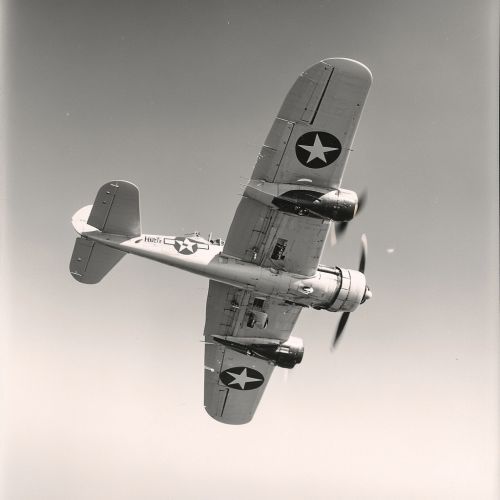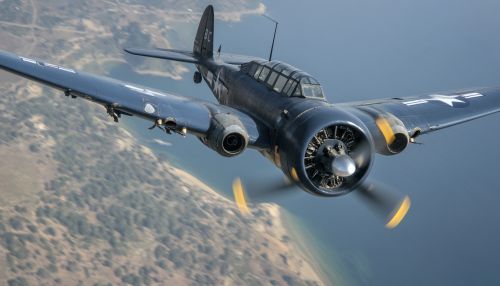Curtiss SB2C Helldiver
Introduction
The **Curtiss SB2C Helldiver** was an American naval dive bomber developed during World War II. It was designed to replace the earlier Douglas SBD Dauntless and became the primary dive bomber for the United States Navy. Despite its initial development challenges and mixed reception, the SB2C Helldiver played a significant role in the Pacific Theater, contributing to the success of numerous naval operations.
Development and Design
Origins
The development of the SB2C Helldiver began in 1938 when the United States Navy issued a requirement for a new dive bomber to replace the aging SBD Dauntless. The Curtiss-Wright Corporation was awarded the contract, and the aircraft was designated as the XSB2C-1. The design aimed to incorporate advanced features such as increased speed, range, and payload capacity.
Technical Specifications
The SB2C Helldiver was a monoplane with a distinctive inverted gull wing design. It was powered by a single Wright R-2600-20 Cyclone radial engine, capable of producing 1,900 horsepower. The aircraft had a wingspan of 49 feet 9 inches and a length of 36 feet 8 inches. It was equipped with a retractable landing gear and could carry a bomb load of up to 2,000 pounds. The Helldiver was armed with two forward-firing 20mm cannons and two .30 caliber machine guns in the rear cockpit for defensive purposes.
Challenges and Modifications
The development of the SB2C Helldiver faced numerous challenges, including structural issues and stability problems. Early prototypes exhibited poor handling characteristics, leading to extensive modifications. The aircraft underwent several redesigns, resulting in the SB2C-3 variant, which addressed many of the initial shortcomings. Despite these improvements, the Helldiver continued to be criticized by pilots for its difficult handling and maintenance requirements.


Operational History
Introduction to Service
The SB2C Helldiver entered service with the United States Navy in 1943. It was initially deployed aboard aircraft carriers in the Pacific Theater, where it participated in major naval engagements such as the Battle of the Philippine Sea and the Battle of Leyte Gulf. The aircraft's ability to deliver precision dive-bombing attacks made it a valuable asset in the destruction of enemy ships and ground targets.
Combat Performance
Despite its operational success, the Helldiver's performance was often overshadowed by its reputation for being difficult to fly. Pilots nicknamed it the "Beast" due to its challenging handling characteristics. However, its robust construction and powerful armament made it effective in combat. The Helldiver was credited with sinking numerous enemy vessels, including the Japanese battleship Musashi during the Battle of Leyte Gulf.
Variants
Several variants of the SB2C Helldiver were produced during its service life. The SB2C-1 was the initial production model, followed by the improved SB2C-3, which featured a more powerful engine and increased fuel capacity. The SB2C-4 introduced additional armament and improved dive brakes, while the SB2C-5 included further refinements for enhanced performance.
Legacy and Impact
Post-War Service
After World War II, the SB2C Helldiver continued to serve in the United States Navy and Marine Corps until the late 1940s. It was eventually replaced by more advanced aircraft such as the Douglas A-1 Skyraider. Despite its mixed reputation, the Helldiver's contributions to the war effort were significant, and it played a crucial role in the success of Allied naval operations.
Influence on Aircraft Design
The development and operational experience of the SB2C Helldiver influenced subsequent aircraft design, particularly in the areas of dive-bombing tactics and carrier-based operations. Lessons learned from the Helldiver's challenges informed the design of future naval aircraft, leading to improvements in handling, reliability, and combat effectiveness.
